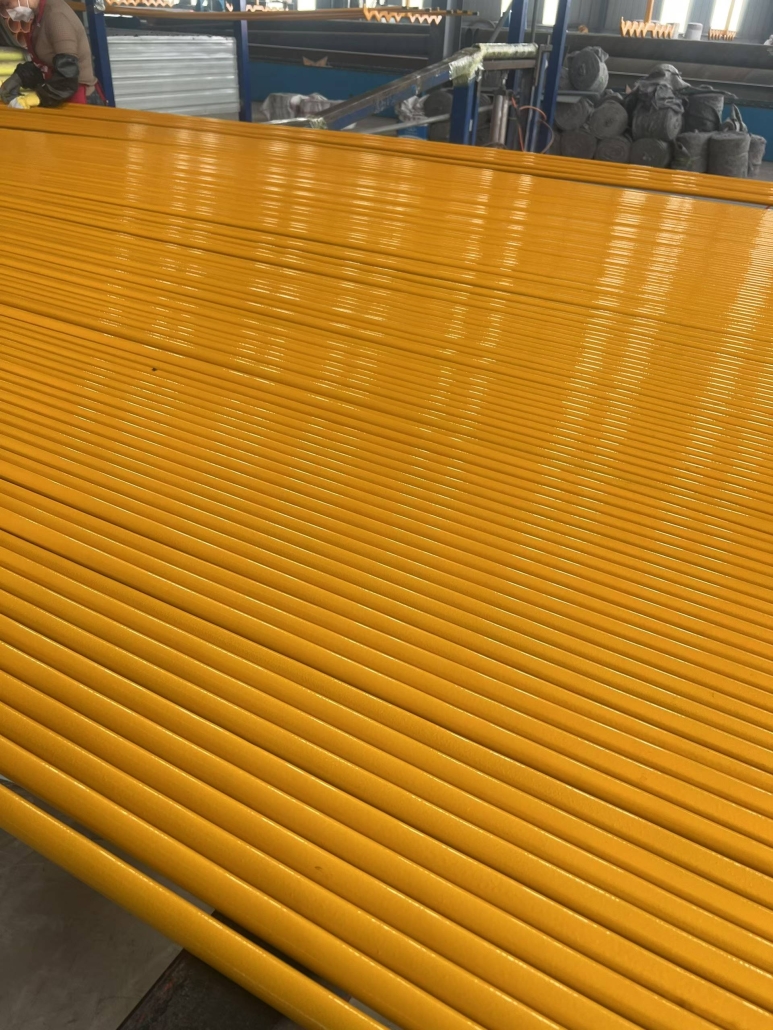Repair Standards And Methods or FBE Anti-corrosion Steel Pipes
Repair of FBE anti-corrosion steel pipes (Fusion Bonded Epoxy anti-corrosion steel pipes) must comply with strict standards and specifications to ensure that the anti-corrosion performance of the repaired coating matches the original coating and guarantee the long-term operational safety of the pipeline. The following details the repair standards, repair methods, and quality inspection from three aspects:
I. Core Standards for Repair
The repair of FBE anti-corrosion coatings must refer to authoritative domestic and international standards, mainly including:
- Domestic Standards
- Technical Specification for Fusion Bonded Epoxy Powder External Coating of Steel Pipes (SY/T 0315-2013): Clearly specifies the repair requirements for FBE coating damage, including repair materials, surface treatment, construction processes, and inspection methods.
- Technical Specification for Repair of Anti-corrosion Coatings on Buried Steel Pipes (GB/T 5135.22-2019): Provides general regulations on the repair process and quality control of anti-corrosion coatings (including FBE) for buried pipelines.
- Code for Construction of Oil and Gas Pipeline Crossing Engineering (GB 50424-2015): Involves special requirements for damage repair of FBE pipelines in crossing sections.
- International Standards
- ISO 21809-3 Petroleum and Natural Gas Industries – Pipeline Transportation Systems – Part 3: Steel Pipe Coatings: Puts forward internationally accepted requirements for the compatibility of FBE coating repair materials and construction processes.
- AWWA C213 Standard for Fusion-Bonded Epoxy Coatings for Steel Water Pipelines: Emphasizes the hygienic safety of materials for the repair of FBE coatings in drinking water pipelines.
II. Premises for Repair and Classification of Damage
Before repair, it is necessary to evaluate the type and extent of damage to determine whether repair is required:
- Minor damage: Local scratches on the coating (depth ≤ 50% of coating thickness), pinholes (diameter ≤ 1mm).
- Moderate damage: Local peeling of the coating (area ≤ 100cm²), scratches with depth > 50% of coating thickness but without exposing the substrate (steel pipe not exposed).
- Severe damage: Large-area peeling of the coating (area > 100cm²), exposure of the substrate (direct exposure of the steel pipe), and steel pipe deformation caused by mechanical damage.
III. Specific Repair Methods
Repair must follow the process of “surface treatment → material selection → coating application”. The repair methods vary slightly according to the degree of damage:
1. Surface Treatment (Core Step)
Regardless of the type of damage, the damaged area and the surrounding 50-100mm range must be surface-treated to ensure the substrate is clean and rough, thereby enhancing the adhesion of repair materials:
- Rust removal grade: For areas with exposed substrate (steel pipe exposed), the rust removal grade must reach Sa2.5 (near-white rust removal), which can be achieved by sandblasting; for non-substrate-exposed areas (only coating damage), it must reach St3 (thorough manual rust removal), which can be done using wire brushes, sandpaper, or power tools for grinding.
- Cleanliness requirements: Remove rust, oil, dust, and old coating debris from the surface, clean it with dry compressed air or a lint-free cloth, and ensure the surface moisture content is ≤ 4%.
2. Selection of Repair Materials
Repair materials must be compatible with the original FBE coating (chemical stability and adhesion matching) and meet anti-corrosion performance requirements:
- Minor damage (pinholes, shallow scratches): Two-component epoxy repair paint (such as solvent-free epoxy coating) is used, with a dry film thickness ≥ 150μm (equivalent to the thickness of the original FBE coating).
- Moderate damage (local peeling, deep scratches): Modified epoxy repair paste (paste-like, can be thickly applied) or FBE repair powder (requires heat curing, suitable for high-demand scenarios) is used, with a dry film thickness ≥ 200μm.
- Severe damage (substrate exposure, large-area peeling): First apply an epoxy primer (dry film thickness ≥ 80μm), then apply a repair coating of the same type as the original FBE (such as high-build epoxy coating), with a total dry film thickness ≥ 300μm (not less than the thickness of the original coating).
3. Coating Application
- Manual application: Suitable for small-area damage (< 100cm²). Use a scraper or brush to evenly apply the repair material to the treated surface, ensuring no bubbles or sagging, and the edges transition smoothly with the original coating (avoiding steps).
- Heat curing: If FBE repair powder is used, the repair area must be preheated to 180-220℃ (consistent with the curing temperature of the original FBE) using a heat gun or medium-frequency heating equipment, then the powder is sprayed and allowed to cool and cure naturally.
- Multi-layer application: For areas requiring higher thickness (such as severe damage), 2-3 layers of coating must be applied, with an interval of ≥ 4 hours between each layer (after thorough drying) to avoid cracking caused by excessive thickness of a single layer.
IV. Quality Inspection Standards
After repair, the following inspections must be conducted to ensure qualification:
- Appearance: The coating surface is flat, without bubbles, pinholes, or sagging, and connects smoothly with the original coating, with no obvious color difference.
- 두께: Detected with a coating thickness gauge, the dry film thickness is not less than that of the original FBE coating (usually ≥ 300μm), and the local minimum thickness is not less than 80% of the design value.
- Adhesion: Using the cross-cut test (grid spacing 1mm, coating peeling ≤ 5% after tape peeling) or the pull-off test (adhesion ≥ 5MPa, consistent with the original coating).
- Pinhole detection: Detected with a spark tester (voltage set according to thickness: 15-30kV for 100-300μm), with no breakdown (no sparks).


댓글을 남겨주세요
토론에 참여하고 싶으신가요?자유롭게 기여해 주세요!